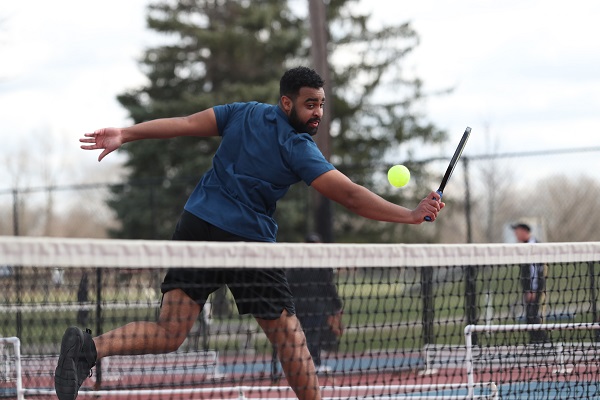Can you get tennis elbow playing pickleball? Learn the causes, symptoms and treatment

Tennis elbow, or lateral epicondylosis, is a degenerative condition of the tendons located at the outer part of the elbow. These tendons are responsible for extending your wrist and your grip.
This is a condition that affects 1 to 3% of the population, with most patients at Salem Health Orthopedics receiving this diagnosis between ages 40 and 50.
“Symptoms usually progress slowly over time,” said sports medicine orthopedist Carol Chang, DO. “Most common symptoms include tenderness at the outer part of the elbow that can radiate down the arm, pain with gripping, and activities that require repetitive wrist extension.”
Causes of tennis elbow
Overuse of these outer elbow tendons — caused by repetitive wrist extension or gripping movements in sport or work — can lead to tennis elbow.
“That treatment includes rest and avoidance of aggravating activities,” said Dr. Chang. “Ice and ibuprofen can be helpful for pain relief.”
Eccentric loading exercises, like bending your wrist over a table while holding a weight or stretching the wrist muscles in the forearm, are also important for tendon remodeling.
“These exercises contract the muscles while lengthening them,” she said.
The orthopedist said a brace can also be used to distribute force across the tendon and keep the wrist in a neutral position.
Tennis elbow prevention
Dr. Chang notes that proper form in sports is key in preventing this kind of injury.
“With the recent popularity of pickleball, I have seen tennis elbow in new players due to the tendency to swing with too much force through the arm,” she said. “Proper technique requires transfer of force through the legs, trunk and arm.”
If work is causing the injury, however, Dr. Chang recommends creating an ergonomically sound desk space.
“For tennis elbow specifically, keep the elbow at 90 degrees with the wrist neutral,” she said. Adding a wrist pad for your keyboard and mouse can be helpful as well, she adds.
Orthopedic care
Are you recovering from tennis elbow? Learn more about: